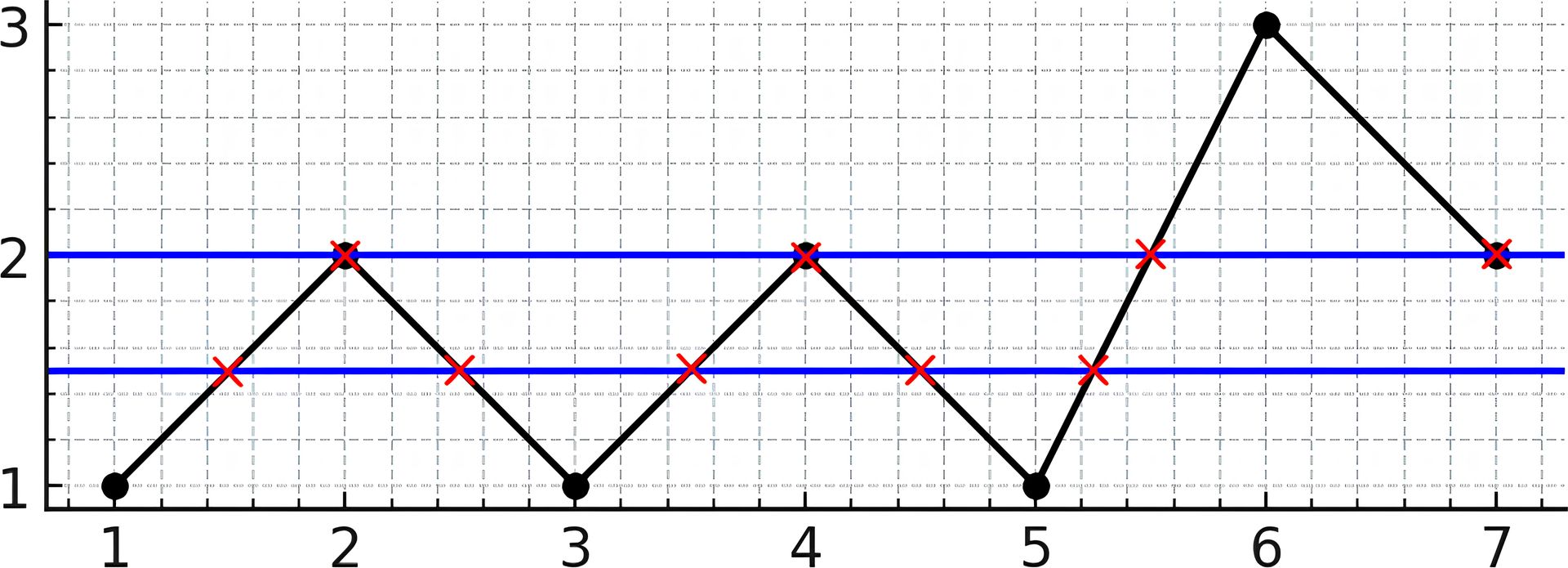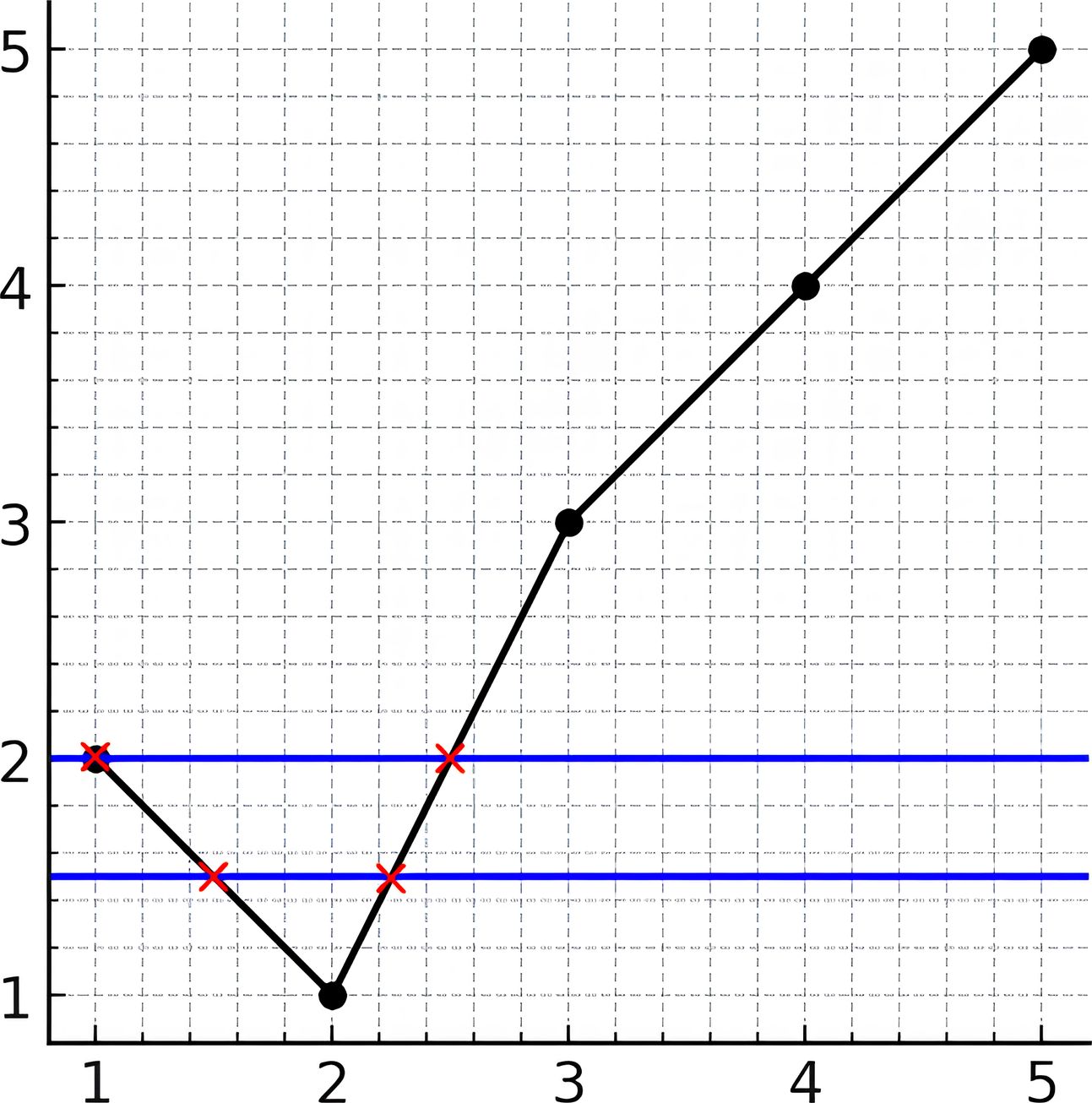| comments | difficulty | edit_url | tags | ||||
|---|---|---|---|---|---|---|---|
true |
Hard |
|
There is a line chart consisting of n points connected by line segments. You are given a 1-indexed integer array y. The kth point has coordinates (k, y[k]). There are no horizontal lines; that is, no two consecutive points have the same y-coordinate.
We can draw an infinitely long horizontal line. Return the maximum number of points of intersection of the line with the chart.
Example 1:

Input: y = [1,2,1,2,1,3,2] Output: 5 Explanation: As you can see in the image above, the line y = 1.5 has 5 intersections with the chart (in red crosses). You can also see the line y = 2 which intersects the chart in 4 points (in red crosses). It can be shown that there is no horizontal line intersecting the chart at more than 5 points. So the answer would be 5.
Example 2:

Input: y = [2,1,3,4,5] Output: 2 Explanation: As you can see in the image above, the line y = 1.5 has 2 intersections with the chart (in red crosses). You can also see the line y = 2 which intersects the chart in 2 points (in red crosses). It can be shown that there is no horizontal line intersecting the chart at more than 2 points. So the answer would be 2.
Constraints:
2 <= y.length <= 1051 <= y[i] <= 109y[i] != y[i + 1]foriin range[1, n - 1]
class Solution {
public int maxIntersectionCount(int[] y) {
final int n = y.length;
int ans = 0;
int intersectionCount = 0;
TreeMap<Integer, Integer> line = new TreeMap<>();
for (int i = 1; i < n; ++i) {
final int start = 2 * y[i - 1];
final int end = 2 * y[i] + (i == n - 1 ? 0 : y[i] > y[i - 1] ? -1 : 1);
line.merge(Math.min(start, end), 1, Integer::sum);
line.merge(Math.max(start, end) + 1, -1, Integer::sum);
}
for (final int count : line.values()) {
intersectionCount += count;
ans = Math.max(ans, intersectionCount);
}
return ans;
}
}